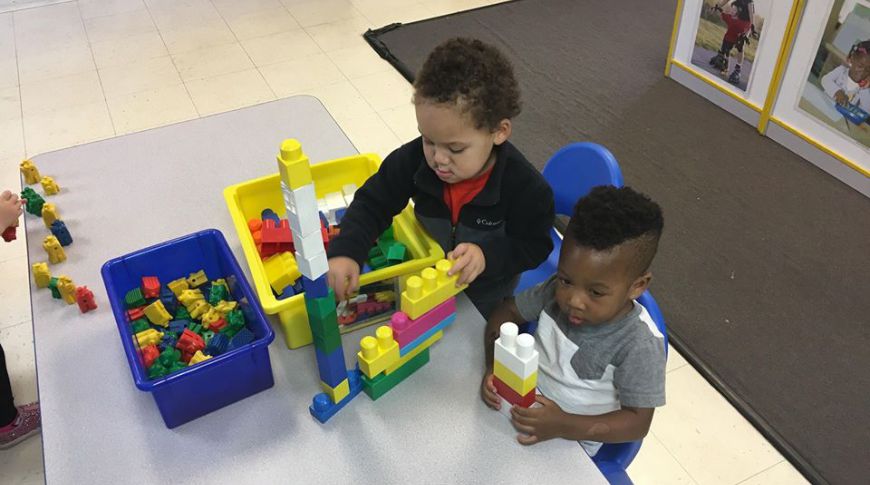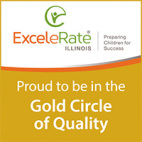Phase One- Precautionary Measures- Active Cases in Our Community
Staff-
• Staff shall take their temperatures before entering the Center at the beginning of their reported work period, sign in and document temperature in the attendance binder.
• Staff will be rechecked for fever during their work period if they begin to feel ill or experience any sign of respiratory illness. Individuals with a temperature of 100.4º F or higher
shall be excluded from the day care center.
• Masks and face shields will be made available to all staff. Masks and face shield should be taken home each night and washed before re-wearing to work.
• Staff should change into scrubs upon arrival. Staff change out of scrubs during departure back into regular clothes. Scrubs can be washed at the center for the next day.
• Extra masks and scrubs will be available in the teacher resource room.
• Staff should change into a pair of “school shoes” that should be stored in the Center for daily wear.
• Staff have been trained to implement the new policies and procedures from DCFS, IDPH and CDC on Communication with Parents, Physical Environment and Health and Safety
• Staff must maintain stable groups of children at all times.
• Staff will arrange furniture to give children more space.
•Staff will provide individualized art materials and small group activities.
• Staff must be limited to working with one group of children.
• A “floating” staff member is permitted between no more than 2 rooms if smocks/overgarments are changed between rooms.
• Qualified substitutes are allowed for days that staff are out sick/on vacation.
• Programs should staff for at least 2 adults per classroom if possible. One staff person per room is permissible at the start/end of day as long as ratios are met.
• Conversations about a child's day will be done by notes.
Caring for Infants/Toddlers
• When diapering a child, staff wash your hands and wash the child’s hands before you begin.
• After diapering, staff wash the child’s hands and their hands (even if you were wearing gloves) and disinfect the diapering area.
• When washing, feeding, or holding very young children: Staff can protect themselves by wearing a smock/shirt and by wearing long hair up off the collar in a ponytail or other updo.
• Infants and toddlers to ensure cribs and cots can be placed 6 feet apart
• Staff should wash their hands, neck, and anywhere touched by a child’s secretions.
• Staff should change the child’s clothes if secretions are on the child’s clothes, including drool. They should change their smock/shirt if there are secretions on it and wash their hands
again.
• Contaminated clothes should be placed in a plastic bag or washed in a washing machine. All staff should have multiple changes of clothes on hand in the child care center or home-based child
car.
Social Distancing Strategies: Class Size, Napping
• Children are kept in small groups, not more than ten children per classroom. Even with low numbers of children, staff should use multiple tables for meals and snacks to implement social
distancing whenever possible. There are to be no large group times on the carpet.
• Wherever possible, the same staff will remain with the same group of children each day.
• There must be absolutely no multi-classroom activities. Social distancing practices should be in place, which means different groups of children should not have contact with one another.
• At nap time, place resting children head to toe in order to further reduce the potential for viral spread. Programs with sufficient space should place all children six feet apart at naptime as
much as possible.
• There will be no outside visitors and volunteers with the exception of employees or contracted service providers who should observe all protocols including temperature checks upon
arrival.
Healthy Hand Hygiene Behavior
1. All children, staff will engage in hand hygiene at the following times:
• Arrival to the facility
• After staff breaks
• Before and after preparing food or drinks
• Before and after eating, handling food, or feeding children
• Before and after administering medication or medical ointment
• After diapering
• After using the toilet or helping a child use the bathroom
• After coming in contact with bodily fluid
• After handling animals or cleaning up animal waste
• After playing outdoors
• After playing with sand
• After handling garbage
• After cleaning
2. Wash hands with soap and water for at least 20 seconds. If possible, please provide hand lotion to support healthy skin.
3. Assist children with handwashing, including infants who cannot wash hands alone.
4. After assisting children with hand washing, staff should also wash their hands.
5. Pictures are posted describing hand washing steps near sinks.
6. Hand-washing steps are posted by every sink.
Alcohol-based hand sanitizer will be placed in every room. Hand sanitizer is not an acceptable substitute for soap and running water.
Cleaning & Disinfecting, Including Toys & Bedding
• All surfaces, especially where children eat- tables, countertops, top of shelves, etc.
• Bathrooms
• Frequently used equipment, including electronic devices
• Door handles and handrails
• Items children place in their mouths, including toys
• Playground equipment disinfected by each classroom teacher after recess.
• Each classroom will minimize toys by turning 2 shelves and rotate cleaning/sanitizing and disinfecting.
• At the beginning of the day, the opening teachers will clean and disinfect toys.
• Staff working during naptime should clean and disinfect toys.
• At the end of the day, the closing teachers will clean sanitize and disinfect all the toys and dry overnight.
• Each infant crib and cots are labeled with the child’s name.
• Infant cribs/ All cots and sheets are cleaned/disinfected daily.
• Each child will have a extra set of sets. We will rotate cot sheet and blanket. Sheet and blanket will be placed in the child’s individual bin that is labeled with the child’s name and washed
weekly at the Center.
• All carpets have been cleaned and sanitized (5/19/20) and are vacuumed daily to remove loose debris.
• All floors have been sanitized (5/22/20) and are swept several times daily and mopped daily. Bathrooms are wiped down and sanitized several times a day.
• Toys that cannot be cleaned and sanitized has been removed from the classroom, including items such as soft toys, dress-up clothes, and puppets.
• Children personal belongings are placed in their cubby.
•Children will bring an individual art box for art materials that cannot be sanitized.
Signs-
• Signs will be posted throughout the facility describing ways to prevent the spread of germs
• Signs will be posted outside all entrances restricting entry to anyone with symptoms of illness/respiratory infection.
Playground Rules
• Those classes who share a playground area cannot be on the playground at the same time, so please do not exit the building until the other class has disinfected and left the playground.
• Please be sure and follow these exact times on your class schedule to allow all classrooms to get their full amount of time to play outside.
• Outside time is over at 4:00 pm to allow time for staff to make sure each child has their hands and face wiped and ready for pick up.
Food Preparation and Meal Service
• All food service equipment is washed, rinsed and sanitized daily in the three-compartment sink.
• Our cook will place meals in individual classroom bins and roll cart to each classroom door for pick. Staff will sit bin outside the classroom door when finished.
• High chairs and tables are sprayed with soapy water, fresh water and a sanitizing/disinfect solution and wiped off with a paper towel before and after each meal.
• Spills on the floor are wiped up as they occur. After breakfast, lunch, and snack.
• The staff dumps the food into the small garbage bags, ties it up, and puts the garbage bag in the hallway. The cook takes the garbage to the outside dumpster. We will use disposable
plates, cups and utensils when possible.
• Cease family style meal service. Use disposable plates, cups, and utensils.
Fire Drills
A scheduled/non-scheduled fire drill procedure is as follows:
A). Designee push the fire alarm code and goes around to all classrooms to make sure everyone has evacuated the building.
B). Designee goes to the green room and silences the alarm and resets the alarm on the fire panel. Directions to reset alarm are on the inside cover of the fire panel.
C). Designee then goes across the street to designated social distancing areas and takes count of all children using the parent sign in sheets. Designee will then document number of
children in each classroom and staff names.
D). Designee completes a fire drill record. The record is then reviewed and evaluated by Director.



